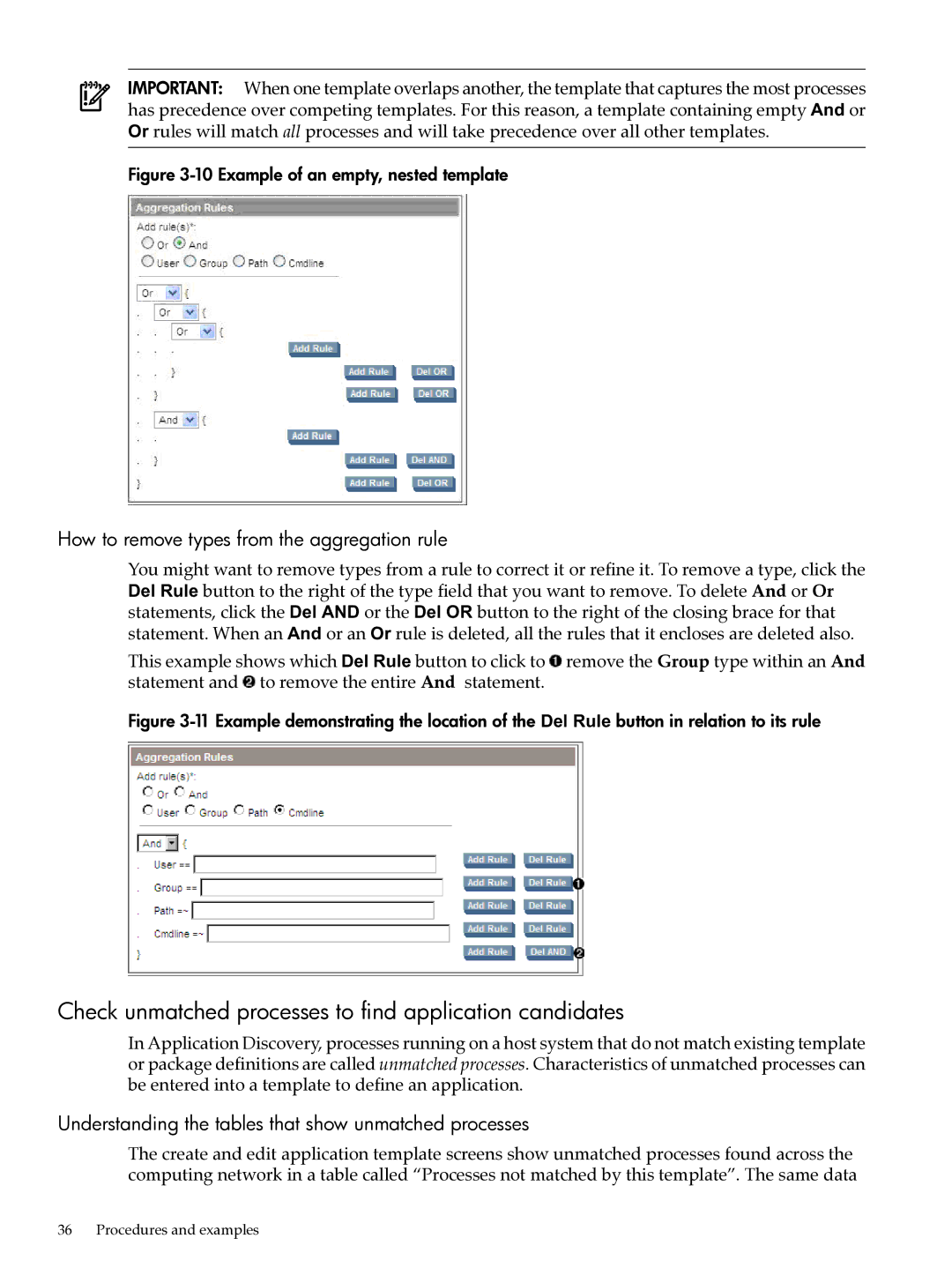
IMPORTANT: When one template overlaps another, the template that captures the most processes has precedence over competing templates. For this reason, a template containing empty And or Or rules will match all processes and will take precedence over all other templates.
Figure 3-10 Example of an empty, nested template
How to remove types from the aggregation rule
You might want to remove types from a rule to correct it or refine it. To remove a type, click the Del Rule button to the right of the type field that you want to remove. To delete And or Or statements, click the Del AND or the Del OR button to the right of the closing brace for that statement. When an And or an Or rule is deleted, all the rules that it encloses are deleted also.
This example shows which Del Rule button to click to ![]() remove the Group type within an And statement and
remove the Group type within an And statement and ![]() to remove the entire And statement.
to remove the entire And statement.
Figure 3-11 Example demonstrating the location of the Del Rule button in relation to its rule
Check unmatched processes to find application candidates
In Application Discovery, processes running on a host system that do not match existing template or package definitions are called unmatched processes. Characteristics of unmatched processes can be entered into a template to define an application.
Understanding the tables that show unmatched processes
The create and edit application template screens show unmatched processes found across the computing network in a table called “Processes not matched by this template”. The same data
36 Procedures and examples
